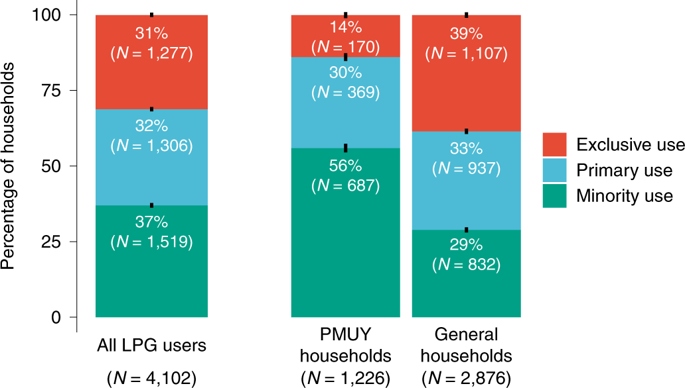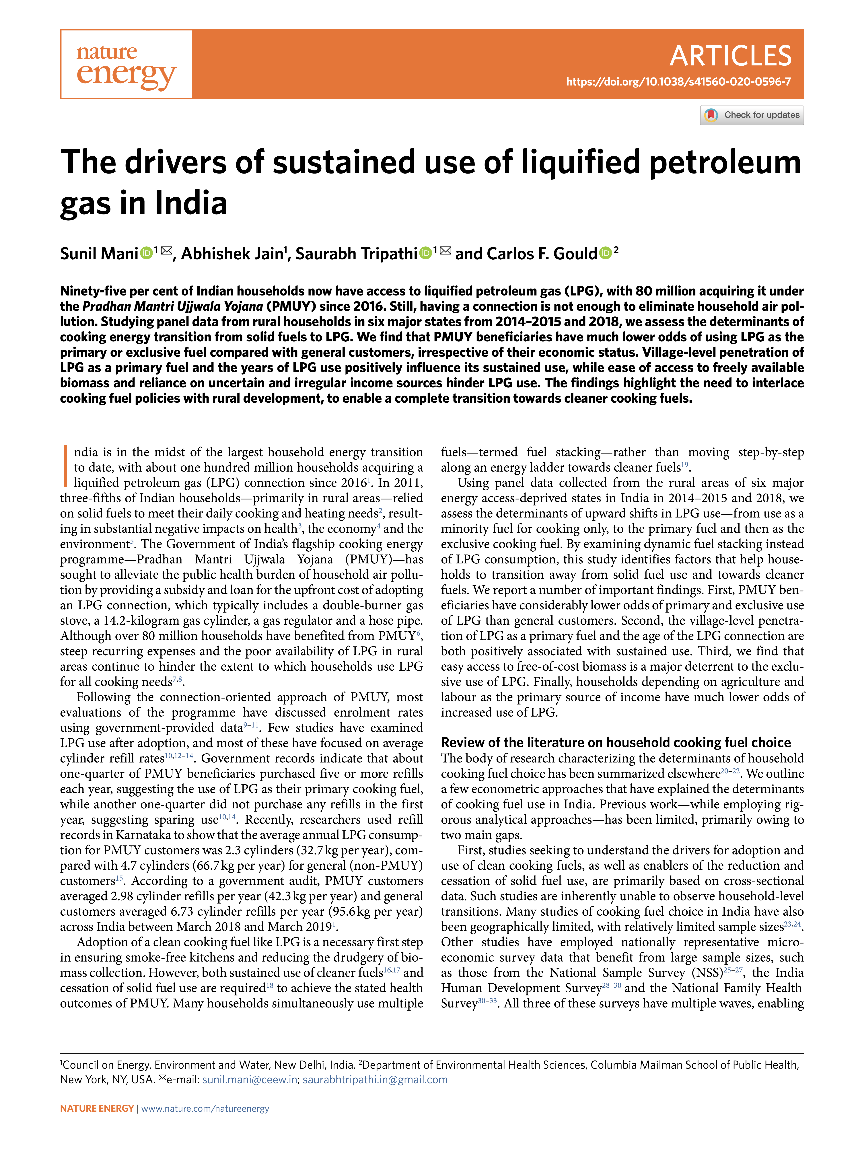Paper
The Drivers of Sustained Use of Liquified Petroleum Gas in India
Sunil Mani, Abhishek Jain, Carlos F. Gould
April 2020 | Energy Transitions
Suggested citation: Mani, Sunil, Abhishek Jain, Saurabh Tripathi, and Carlos F Gould. 2020. "The Drivers of Sustained Use of Liquified Petroleum Gas in India." Nature Energy. https://doi.org/10.1038/s41560-020-0596-7
Overview
This paper assesses the determinants of India's cooking energy transition from solid fuels to LPG based on a panel survey of about 9,000 rural households. Ninety seven per cent of Indian households now have access to LPG. However, having a connection alone is not enough to eliminate household air pollution as it is not leading to the sustained use of LPG. The paper highlights the need to align cooking fuel policies with rural development to enable a complete transition towards cleaner cooking fuels. The data was collected from the rural areas of six major energy access-deprived states in India from 2014–2015 and 2018.
Key Highlights
- Pradhan Mantri Ujjwala Yojana (PMUY) beneficiaries are half as likely to use LPG as their primary or exclusive cooking fuel, even when they have the same socioeconomic and demographic background as that of a general customer.
- The village-level penetration of LPG as a primary fuel is positively associated with its sustained use, suggesting a possible peer-effect or influence of other village-specific factors like access to biomass and LPG availability.
- Households with irregular and uncertain income sources—those dependent on agriculture or daily wages—are much less likely to use LPG as their primary fuel.
- Cattle ownership—which facilitates access to dung cakes in rural areas—and easy access to firewood significantly reduce the likelihood for a household to transition towards cleaner cooking fuel.
- Awareness about the health benefits of LPG does not lead to greater LPG use. Households articulate the positive health impacts of LPG only when they start using it for the majority of the cooking.
Distribution of LPG-use categories among LPG households in 2018.

Source: Authors' analysis
Key Recommendations
- Promote LPG as a primary or exclusive cooking fuel through targeted support and nudges.
- Improve community-level targeting of LPG promotion in laggard areas to leverage strong positive association between proportion of LPG primary users and its increased use.
- Converge LPG promotion with livelihood support interventions such that it can align the cash flows with the recurring expense of LPG refills and improve the affordability.
- Identify commercial-uses of biomass to create an opportunity cost for it.
- Introduce locally tailored business models, such as extending LPG distribution to village-level entrepreneurs and local cooperatives.
India can move forward in enabling a complete transition towards clean cooking fuels for all only by going beyond cooking fuel policies and interlacing them with overall rural development priorities.








